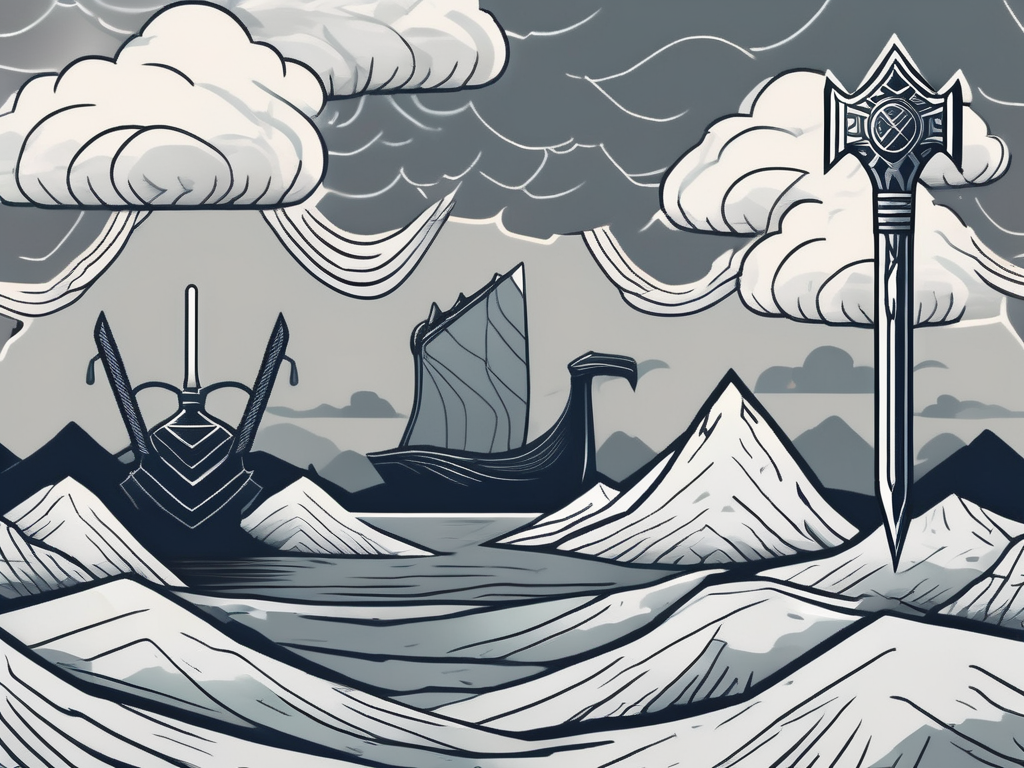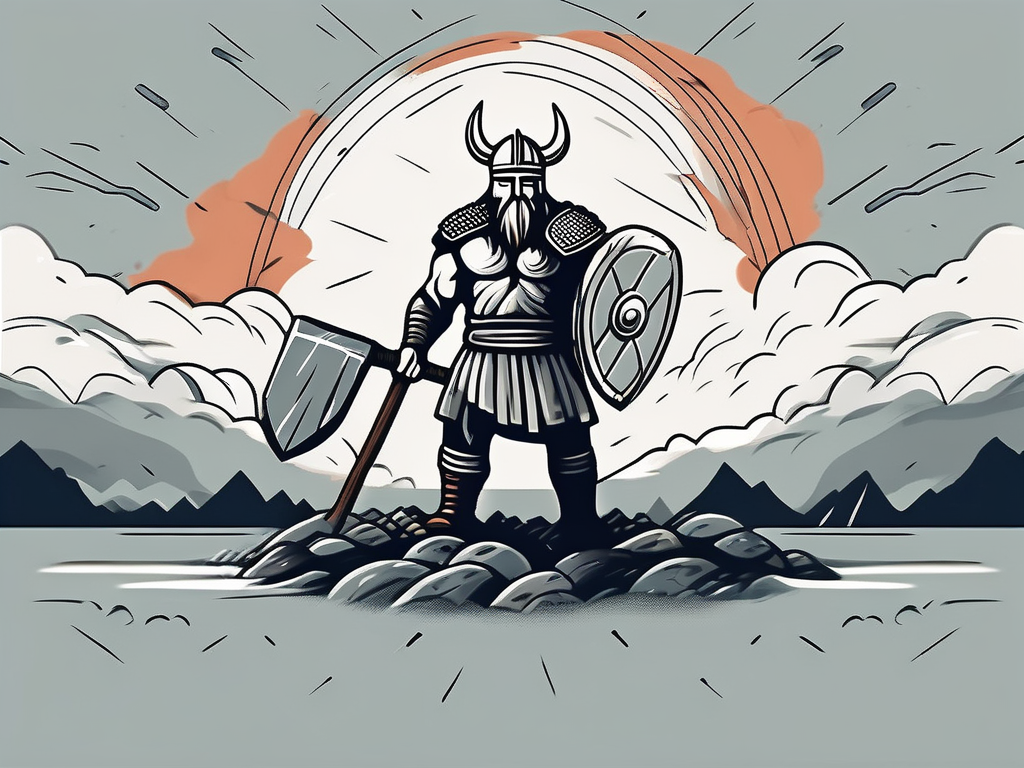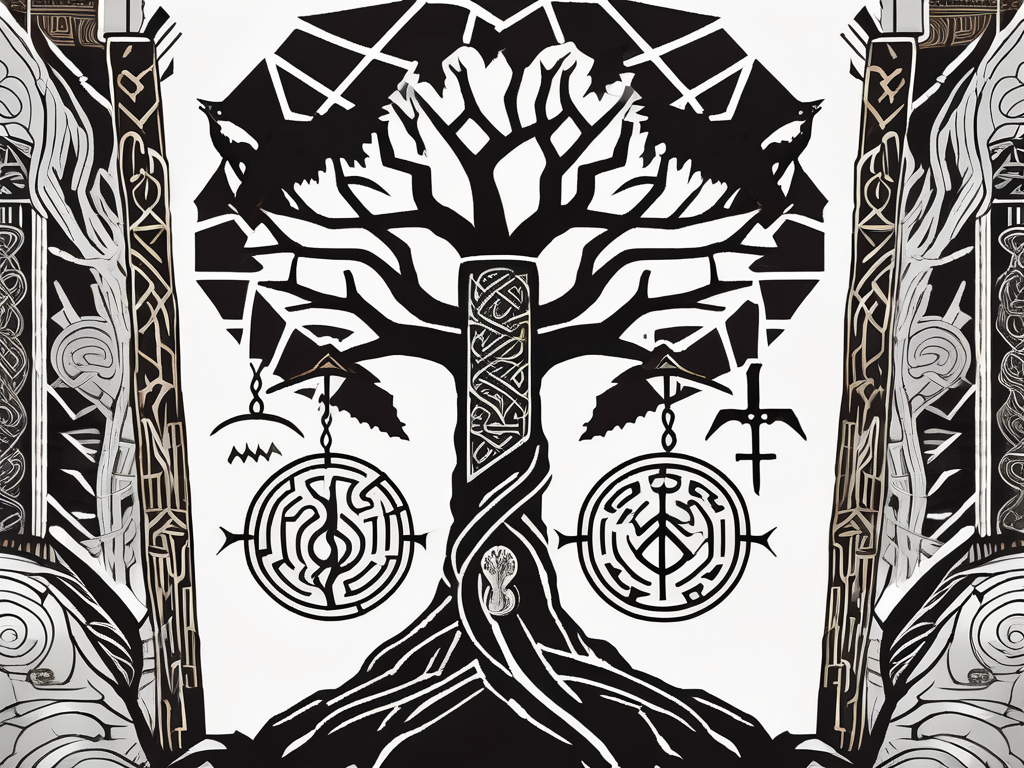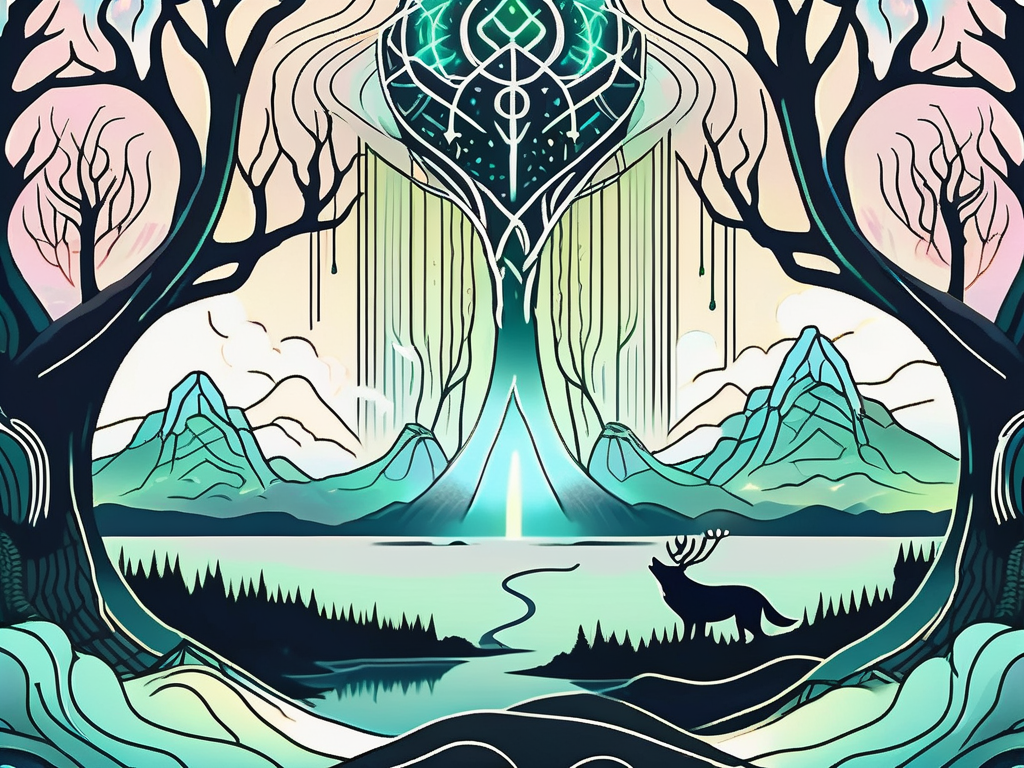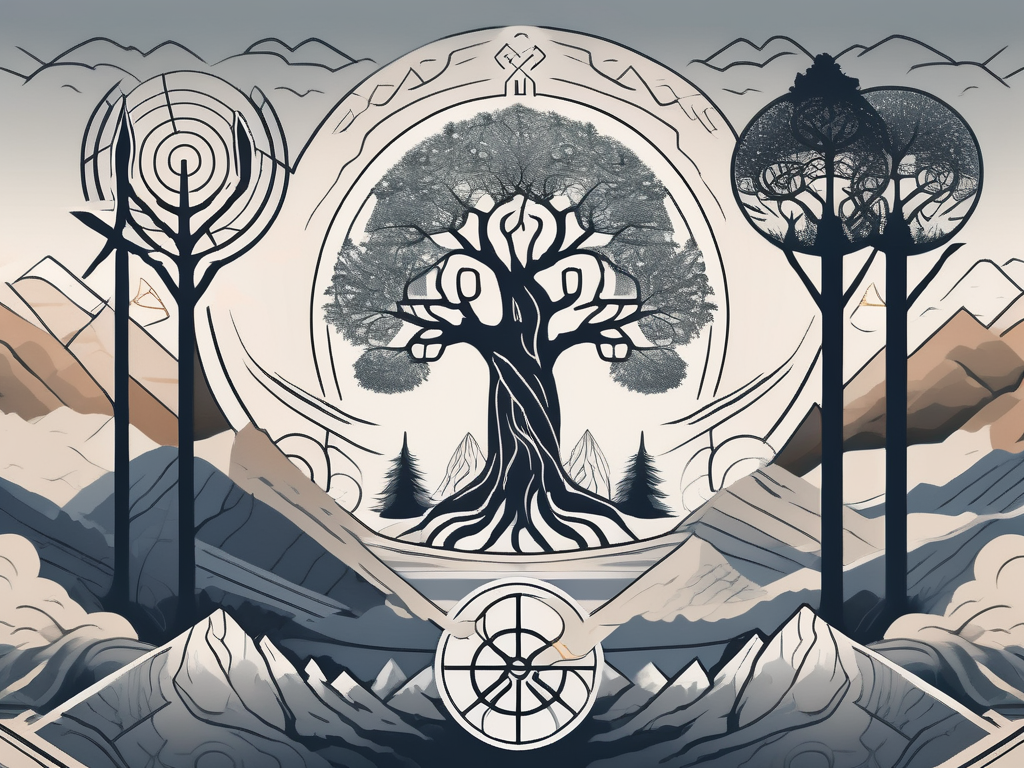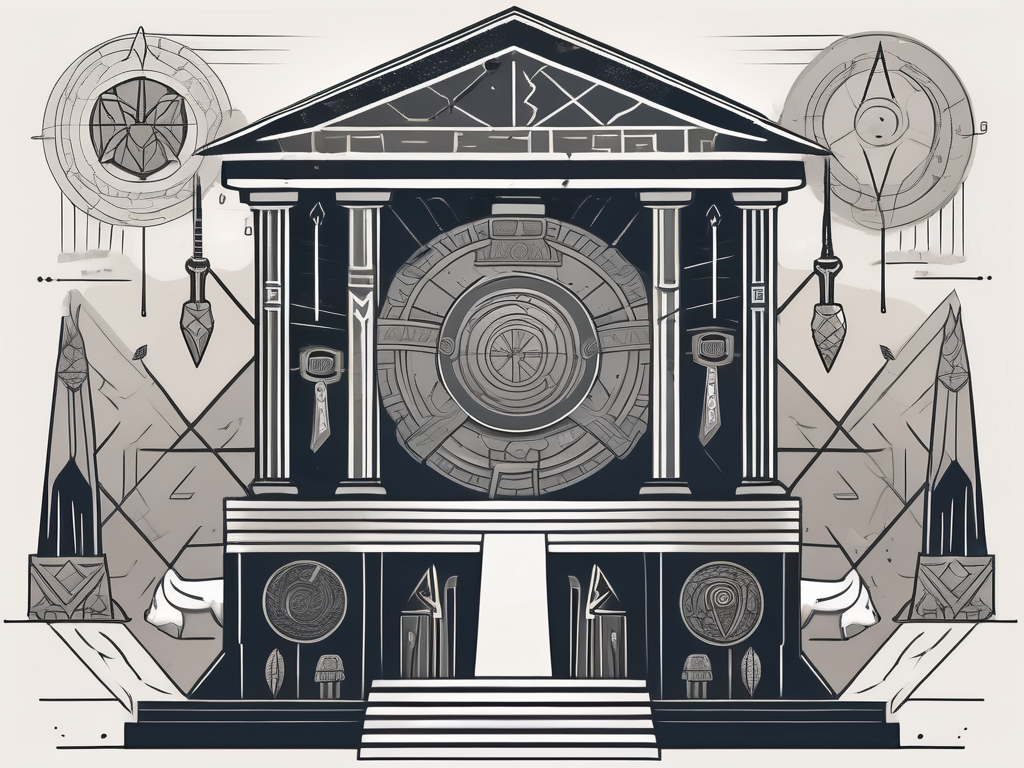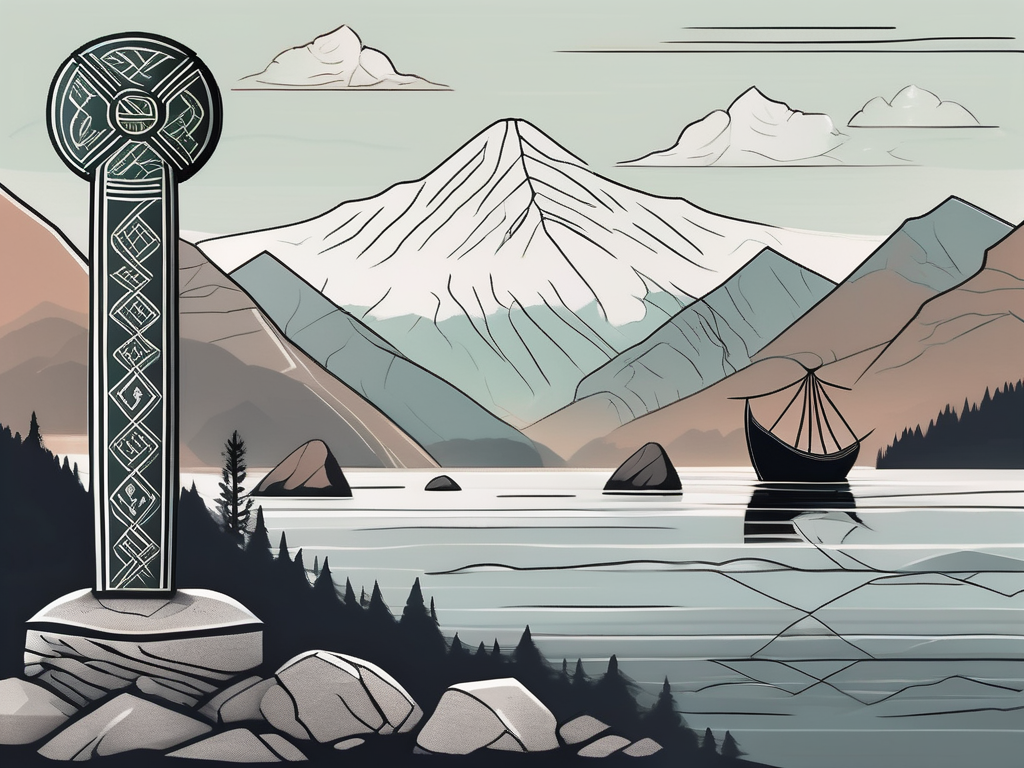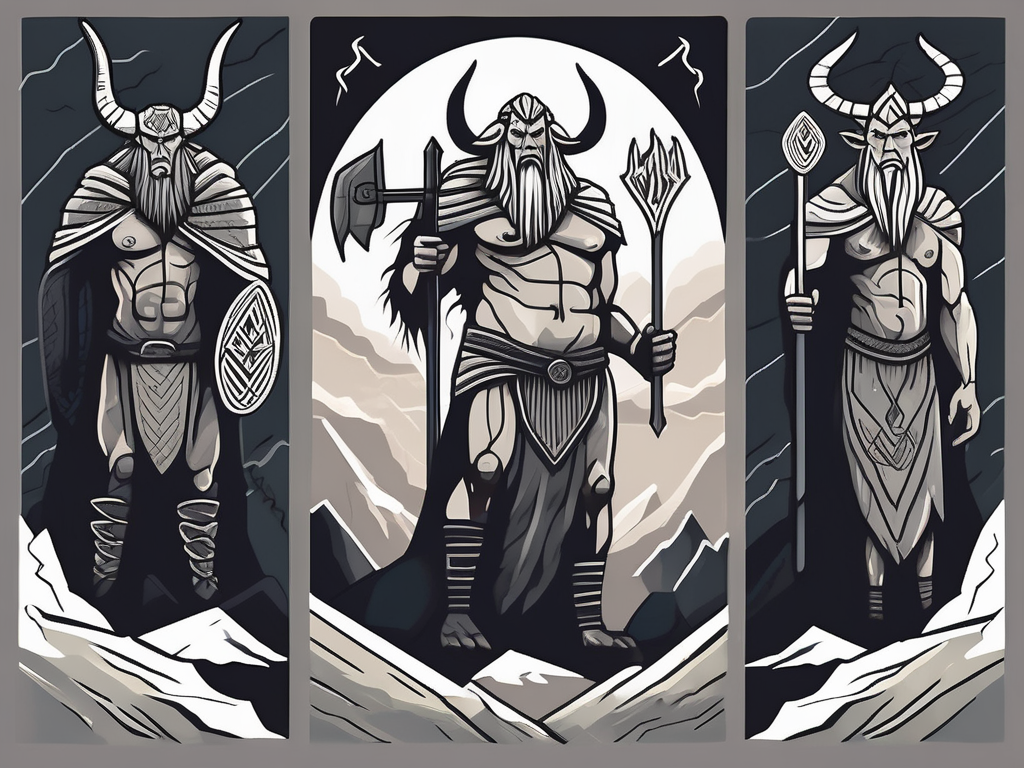Norse mythology is filled with epic stories of gods, goddesses, and powerful supernatural beings. At the heart of these legends are the mighty weapons wielded by these mythical figures. These weapons are not just tools of war, but symbols of power, destruction, and even creation. In this article, we will explore the fascinating world of Norse mythology and delve into the significance of the weapons that shape its narratives.
Understanding Norse Mythology
Norse mythology, originating from the Northern Germanic tribes of Scandinavia, is a rich tapestry of tales passed down through generations. These myths and legends provide insights into the complex belief systems and cultural values of the Norse people.
The Norse people, living in a harsh and unforgiving environment, found solace and guidance in their mythology. It was not just a collection of stories, but a way of life. Norse mythology helped them understand the natural world around them, the forces of nature, and the cyclical nature of life and death.
One of the key aspects of Norse mythology was its emphasis on fate and destiny. The Norse people believed that their lives were predetermined by the gods, and that their actions were guided by a greater cosmic plan. This belief provided them with a sense of purpose and a framework for understanding the world.
The Importance of Mythology in Norse Culture
Mythology was an integral part of Norse culture, as it allowed people to make sense of the natural world, understand their place within it, and pass down knowledge to future generations. Norse mythology helped the Norse people navigate life’s challenges, offering lessons in bravery, honor, and the consequences of one’s actions.
One of the most well-known Norse myths is the story of Ragnarok, the final battle between the gods and the giants. This myth served as a reminder of the impermanence of life and the importance of living with courage and honor. It taught the Norse people to face adversity head-on and to fight for what they believed in.
Another important aspect of Norse mythology was its connection to the natural world. The Norse gods and goddesses were not distant and detached figures, but rather, they were intimately connected to the land, the sea, and the sky. Thor, the god of thunder, was believed to control the weather, while Freyja, the goddess of love and fertility, was associated with the abundance of the earth.
The Pantheon of Norse Gods and Goddesses
The Norse pantheon consists of a multitude of gods and goddesses, each with their own unique powers and responsibilities. From the powerful and noble Odin, the wise and cunning Loki, to the mighty Thor and the beautiful Freyja, these deities shape the Norse myths and influence the course of events within the narratives.
Odin, the Allfather, was the chief god of the Norse pantheon. He was associated with wisdom, knowledge, and war. Odin was often depicted as a wise old man, with a long white beard and a wide-brimmed hat. He was known for his ability to see into the future and for his insatiable thirst for knowledge.
Loki, on the other hand, was a trickster god, known for his mischievous and unpredictable nature. He was both loved and feared by the Norse people, as his actions often brought chaos and disruption. Despite his troublesome nature, Loki played a crucial role in many of the Norse myths, often acting as a catalyst for change and transformation.
Thor, the god of thunder, was one of the most popular and beloved gods in Norse mythology. He was known for his immense strength and his ability to control the weather. Thor was often depicted as a muscular man with flowing red hair and a mighty hammer, which he used to protect both the gods and humans from the forces of evil.
Freyja, the goddess of love and fertility, was associated with beauty, desire, and abundance. She was often depicted as a stunningly beautiful woman, adorned with jewelry and surrounded by cats. Freyja was revered by the Norse people, who believed that she brought love and prosperity into their lives.
These are just a few examples of the gods and goddesses that populate the rich and diverse pantheon of Norse mythology. Each deity had their own unique characteristics and played a specific role within the Norse cosmology. Together, they formed a complex and interconnected web of relationships, reflecting the intricacies of the human experience.
The Role of Weapons in Norse Myths
Weapons play a crucial role in Norse myths, as they often embody the qualities and characteristics of the gods who wield them. These weapons are more than tools of war; they represent the power and identity of their owners and hold immense value in the battles fought by gods, giants, and other mythical beings.
Symbolism and Significance of Weapons
In Norse mythology, weapons are imbued with symbolic meaning. They can represent courage, strength, protection, and are often associated with the gods’ ability to shape the world around them. These weapons are not just physical objects but convey the essence of their wielders, making them a vital part of the myths they appear in.
For example, the mighty spear Gungnir, belonging to Odin, symbolizes wisdom and knowledge. It is said that whenever Odin threw Gungnir, it never missed its target, highlighting his omniscience and precision. The spear’s unerring accuracy represents Odin’s ability to see and understand all things, making it an extension of his divine wisdom.
Similarly, the sword Tyrfing, owned by the warrior Svafrlami, is said to be cursed and brings misfortune to its wielder. This cursed sword represents the tragic consequences of greed and the destructive nature of power. It serves as a cautionary tale, reminding mortals of the dangers of seeking power without considering the consequences.
Weapons as Tools of Power and Destruction
Weapons in Norse mythology serve as instruments of power and destruction. Gods like Thor wielded mighty weapons like Mjölnir, capable of summoning thunder and striking down their enemies. These weapons were essential in the ongoing battles between gods, giants, and other supernatural beings.
Mjölnir, Thor’s hammer, is not only a weapon but also a symbol of protection and fertility. When thrown, it would return to Thor’s hand, highlighting its connection to his divine strength and ability to defend Asgard, the realm of the gods. Additionally, Mjölnir’s ability to create thunderstorms and control the weather demonstrates Thor’s power over nature and his role as a guardian of order.
Another notable weapon is the magical bow and arrow owned by the god Ullr. This bow never missed its target and was associated with hunting, skiing, and archery. Ullr’s skill with the bow symbolizes precision, accuracy, and the importance of mastering one’s craft. The bow’s magical properties also emphasize the god’s connection to nature and his role as a protector of hunters and skiers.
Furthermore, the sword Gram, wielded by the hero Sigurd, played a significant role in the Norse epic, the Völsunga saga. This sword was forged by the god Regin and possessed the power to slay the dragon Fafnir. Gram represents the hero’s courage, determination, and destiny. It is a testament to Sigurd’s bravery and his role as a legendary dragon-slayer.
In conclusion, weapons in Norse myths are not mere tools of war but hold deep symbolic meaning and significance. They embody the qualities and characteristics of their wielders, representing their power, identity, and role in the mythological narratives. These weapons serve as instruments of power and destruction, shaping the outcome of battles between gods and mythical beings, and highlighting the complex relationships between mortals and the divine.
Mjölnir: Thor’s Hammer
Among the iconic weapons of Norse mythology, Mjölnir, Thor’s hammer, stands out as both a symbol of protection and a devastating tool of destruction.
The Creation of Mjölnir
According to myth, Mjölnir was forged by the skillful hands of the dwarven blacksmiths, Brokkr and Sindri. The hammer’s creation was no small feat, as it required the assistance of Loki, who transformed into a fly and relentlessly stung Brokkr during the process, threatening the weapon’s creation.
The Powers and Abilities of Mjölnir
Mjölnir is much more than a mere tool for Thor; it is imbued with incredible powers. This enchanted hammer allows Thor to control lightning, storms, and even resurrect the dead. Mjölnir always returns to Thor’s hand when thrown, making it an unstoppable force in battle.
Gungnir: Odin’s Spear
Odin, the Allfather of Norse mythology, also possesses a formidable weapon called Gungnir. This mighty spear serves as a symbol of wisdom, as well as a tool for Odin’s strategic prowess in battle.
The Origins of Gungnir
Legend has it that the dwarven artisans forged Gungnir and presented it to Odin as a gift. Its creation involved intricate craftsmanship, combining divine materials and the skills of the master craftsmen to craft a weapon of unparalleled quality.
The Unique Characteristics of Gungnir
Gungnir possesses incredible properties. It never misses its target, making Odin an unrivaled marksman. This spear is said to always return to Odin’s hand after being thrown, further emphasizing its connection to its divine owner.
Freyr’s Sword
Among the weapons in Norse mythology, Freyr’s sword stands out for its unique origin and magical properties.
The Story Behind Freyr’s Sword
Freyr, the Norse god of fertility, wields a magnificent sword called the “Sword of Victory.” The story of its creation begins when Freyr traded his own divinity and future bliss for this powerful weapon.
The Magical Properties of Freyr’s Sword
The Sword of Victory possesses incredible powers. It can fight by itself, making it an invaluable asset on the battlefield. This magical sword grants Freyr access to unparalleled skill and strength, enhancing his prowess as a warrior.
In conclusion, the weapons of Norse mythology not only serve as tools of war but also hold deep symbolic meaning. They represent the power, identity, and values of the gods and goddesses who wield them. From Thor’s mythical hammer, Mjölnir, to Odin’s strategic spear, Gungnir, and Freyr’s magical sword of victory, these weapons shape the narratives of Norse mythology, illustrating the ongoing battles between gods, giants, and other mythical beings. Understanding the significance of these mighty weapons allows us to delve deeper into the rich tapestry of Norse mythology and appreciate its enduring impact on our culture and storytelling traditions.
